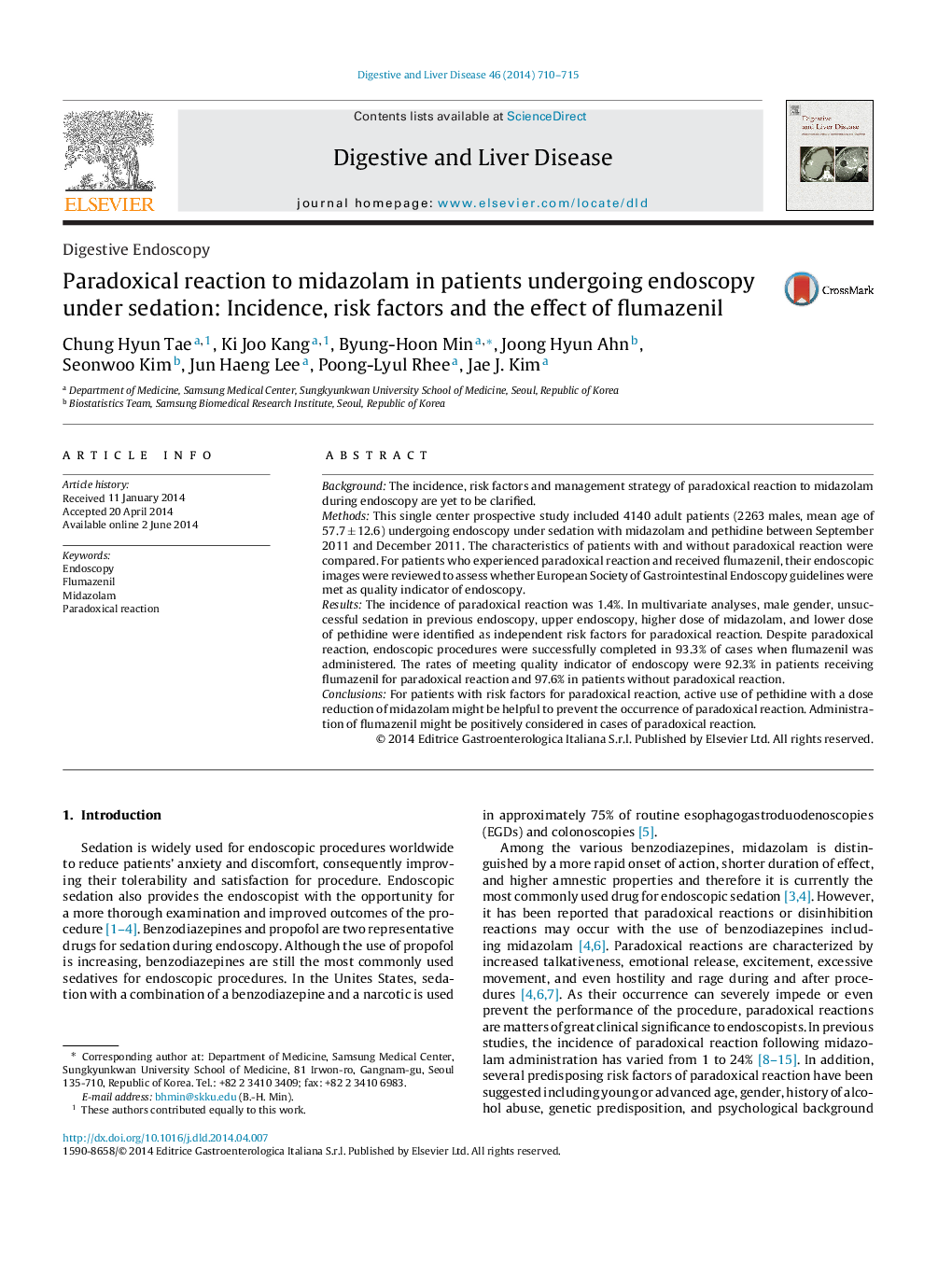| Article ID | Journal | Published Year | Pages | File Type |
|---|---|---|---|---|
| 3262010 | Digestive and Liver Disease | 2014 | 6 Pages |
BackgroundThe incidence, risk factors and management strategy of paradoxical reaction to midazolam during endoscopy are yet to be clarified.MethodsThis single center prospective study included 4140 adult patients (2263 males, mean age of 57.7 ± 12.6) undergoing endoscopy under sedation with midazolam and pethidine between September 2011 and December 2011. The characteristics of patients with and without paradoxical reaction were compared. For patients who experienced paradoxical reaction and received flumazenil, their endoscopic images were reviewed to assess whether European Society of Gastrointestinal Endoscopy guidelines were met as quality indicator of endoscopy.ResultsThe incidence of paradoxical reaction was 1.4%. In multivariate analyses, male gender, unsuccessful sedation in previous endoscopy, upper endoscopy, higher dose of midazolam, and lower dose of pethidine were identified as independent risk factors for paradoxical reaction. Despite paradoxical reaction, endoscopic procedures were successfully completed in 93.3% of cases when flumazenil was administered. The rates of meeting quality indicator of endoscopy were 92.3% in patients receiving flumazenil for paradoxical reaction and 97.6% in patients without paradoxical reaction.ConclusionsFor patients with risk factors for paradoxical reaction, active use of pethidine with a dose reduction of midazolam might be helpful to prevent the occurrence of paradoxical reaction. Administration of flumazenil might be positively considered in cases of paradoxical reaction.
